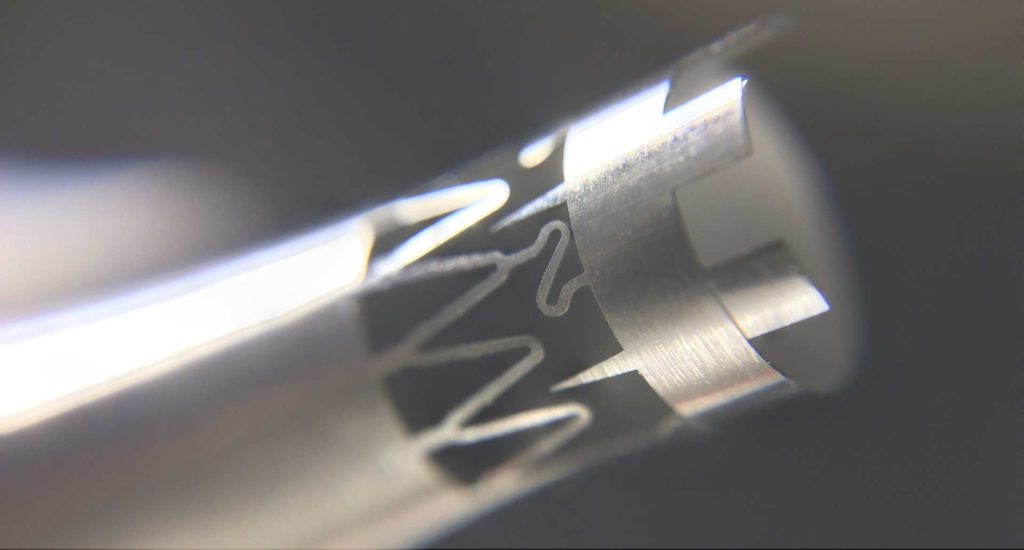Lasers are often integral to the production of components for a range of application areas, including medical device manufacturing. These parts are then integrated in numerous products that vary from complex surgical instrumentation to simple single-use products that are used at the time of need by caregivers in hospital settings or out in communities.
Designers and manufacturers of medical devices have to contend with stringent corporate responsibilities, like profit margins, and industry-wide regulations, such as FDA-compliance, device durability and safety, etc. To help overcome many of these difficulties, innovative technologies are employed to create a value-driven environment that benefits patients, healthcare professionals, and medical device manufacturers alike. Fiber-chirped pulse amplification (FCPA) is one important technology recently recognized with the Nobel Prize award for its innovation and impact.

What is FCPA?
Fiber-chirped pulse amplification involves the use of a fiber amplifier to intensify ultrashort laser pulses in the pico- and femtosecond regions. Most commonly associated with the latter, FCPA lasers can produce remarkably precise modification of materials using laser pulses of extremely high peak powers and short pulse durations (>10-15 seconds). When focused on the part to be machined these laser pulses will vaporize or modify the material with little-to-no thermal deformation of the surrounding area.
FCPA Lasers in Medical Device Manufacturing
Owing to the capability of producing high quality parts, it is no surprise that FCPA lasers are increasingly adopted to revolutionize workflow processes in medical device manufacturing. High-performance medical devices today are engineered with increasingly complex geometries, with smaller feature dimensions than ever before, and to tighter feature tolerances down to the nanoscale (>nm). These basic requirements largely preclude any manufacturing technique other than laser processing – and even begin to eliminate established laser micromachining processes from consideration.
Read More: 4 Uses of Femtosecond Lasers
The background technology used in most medical laser micromachining processes today is often the Titanium-sapphire laser (Ti:sapphire). Yet these are increasingly limited with respect to meeting the uniquely complex corporate responsibilities of medical device manufacturers. For example, these lasers offer high pulse energies (~1 mJ) that often exceed the needs of common workpiece materials which results in reduced precision due to higher thermal side effects and increasing operating costs.
FCPA lasers, such as the FCPA μJewel, is a proven alternative to established Ti:sapphire lasers. FCPA lasers, with micro-Joule pulse energies, offer clean, energy-efficient ablation of most materials using high quality optical pulses that are better matched to current manufacturing processes. The FCPA μJewel from IMRA has proven effective at precisely and effectively machining various material types (ceramics, dielectrics, metals, organic tissues, semiconductors, and more) on the microscale. This level of efficiency, versatility, and precision is extremely valuable in helping medical device manufacturers to stay competitive and compliant in a growth market that is expected to reach $410 billion by 2023[1].
Medical Device Manufacturing from IMRA
IMRA is committed to creative research and innovation based on the ground-breaking technology of ultrafast FCPA lasers. Our μJewel product line features three instrument series, the DE, DX, and DH. If you would like to learn more about the distinct features of each of these, simply contact a member of the IMRA team today. Or, if you are looking for further reading about the application of ultrafast laser technology in medical markets today, read our recent blog post Biomedical Applications of FCPA Technology.
References:


